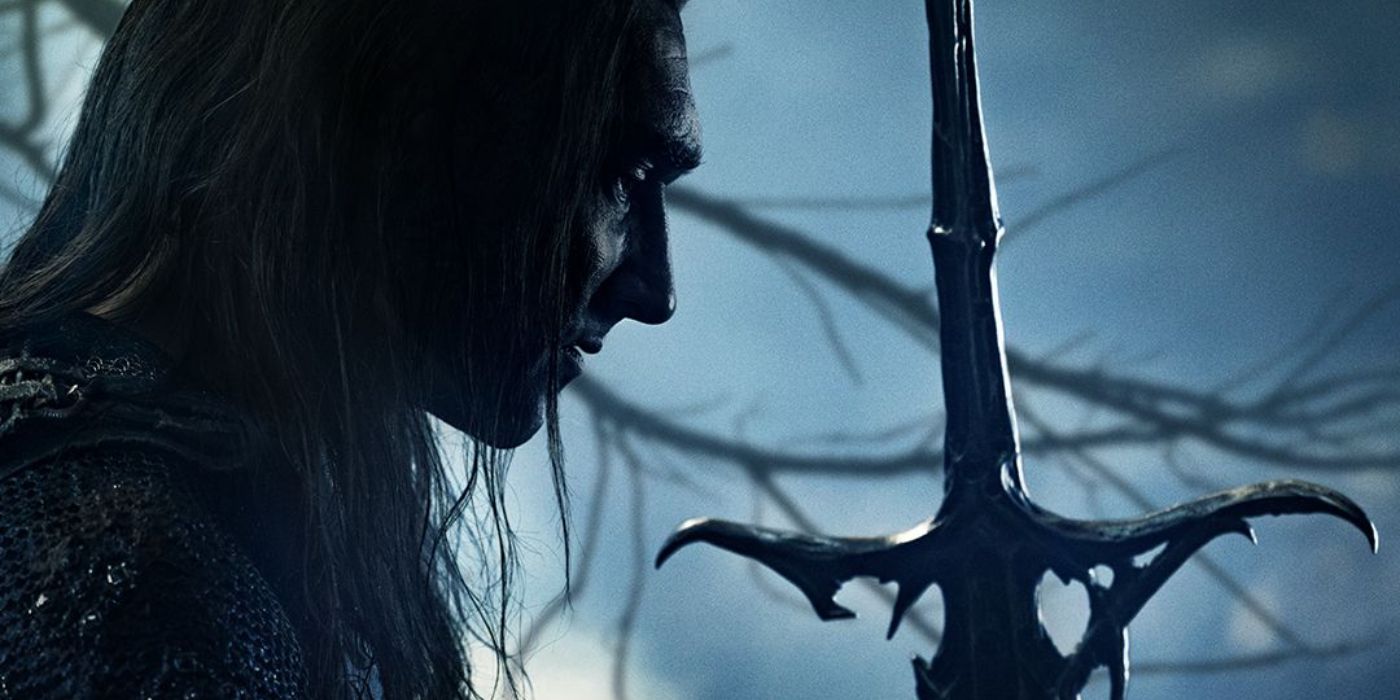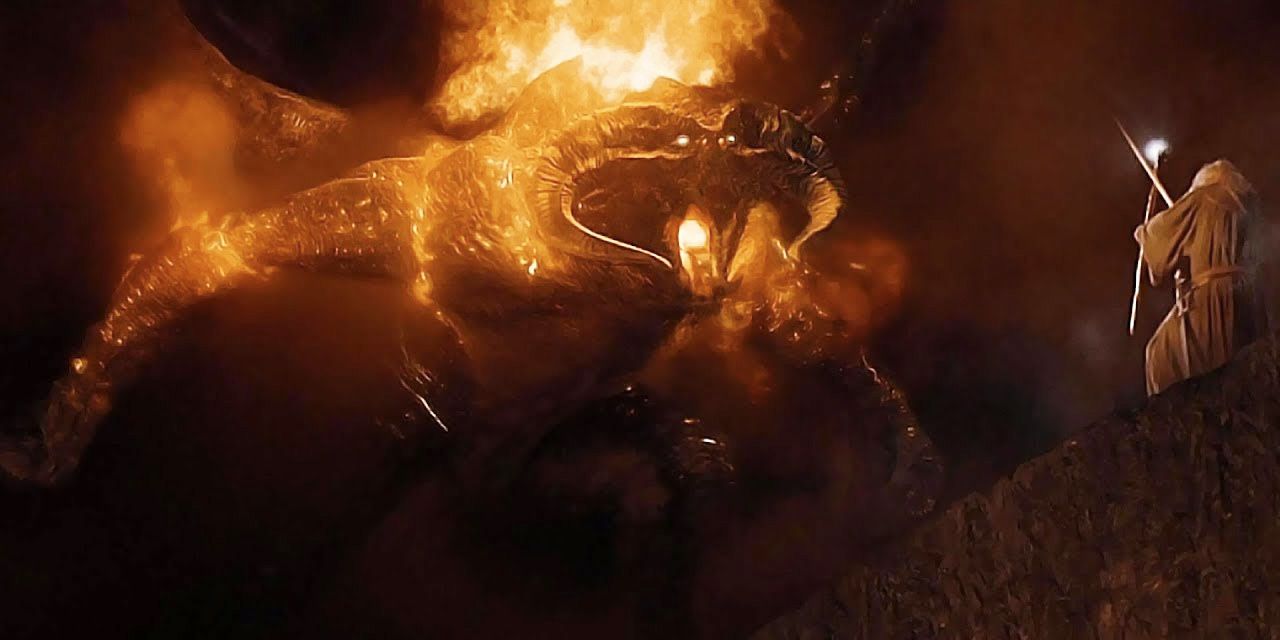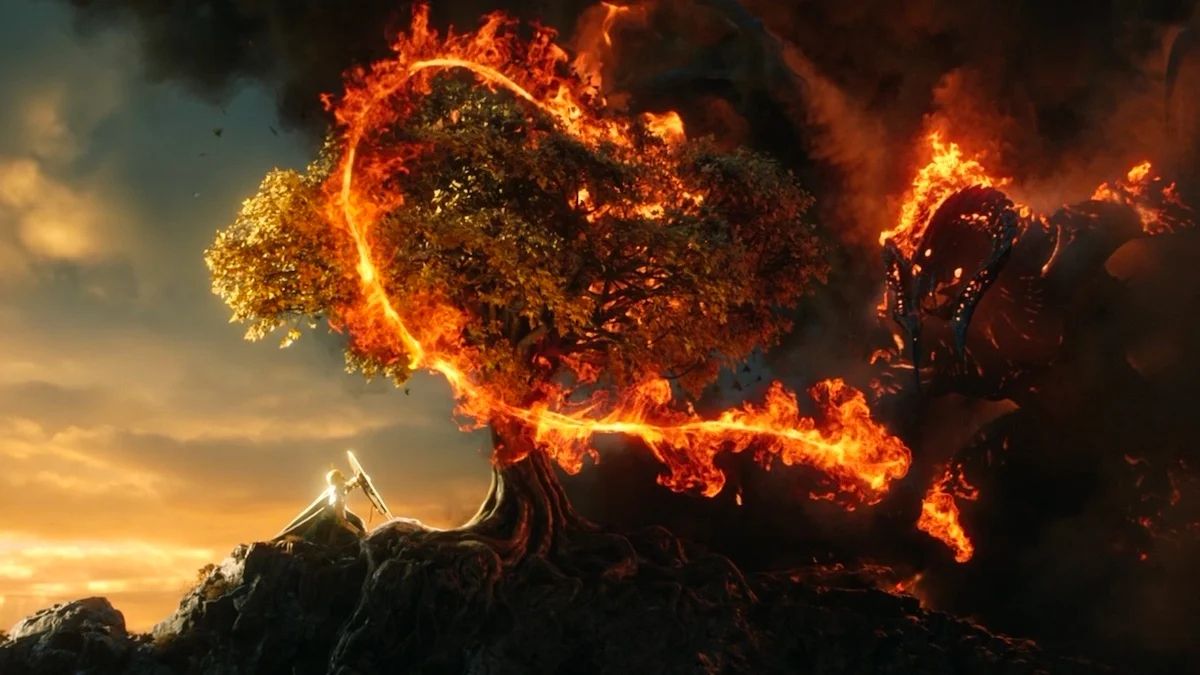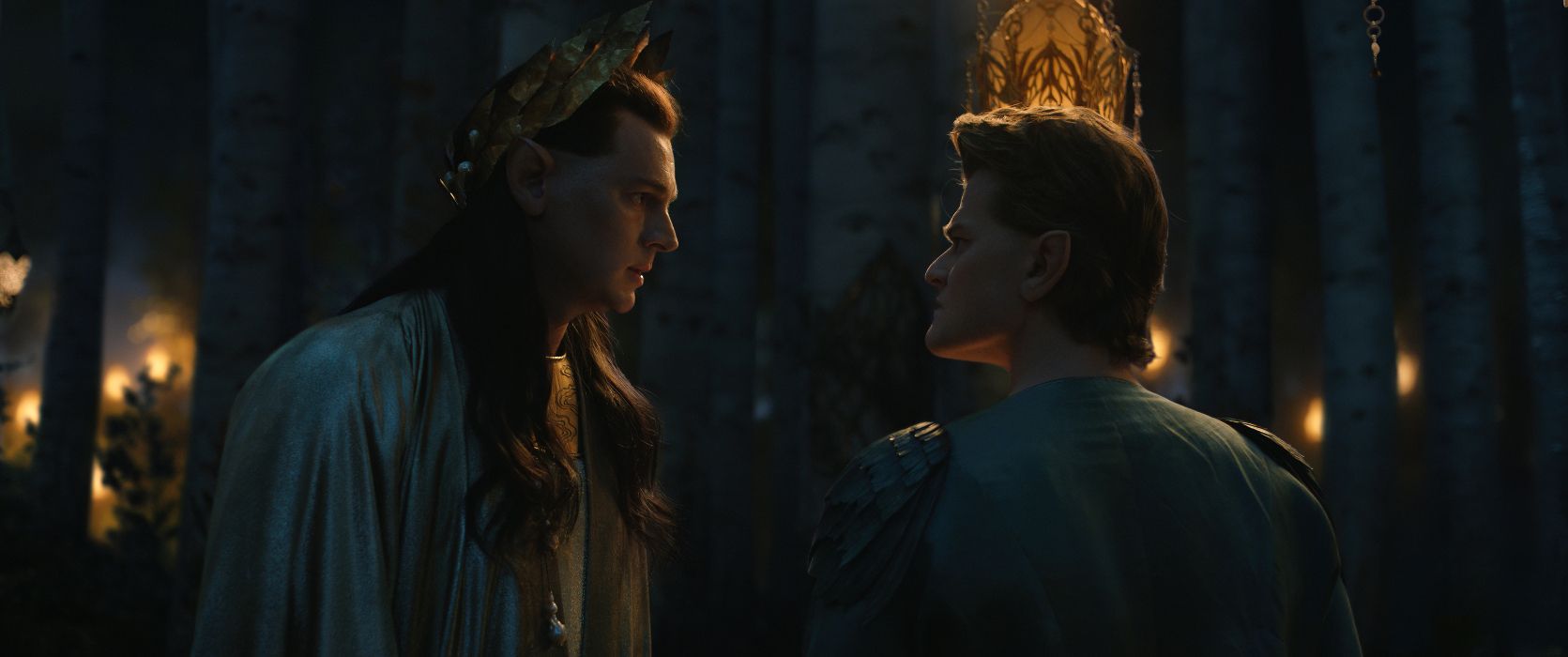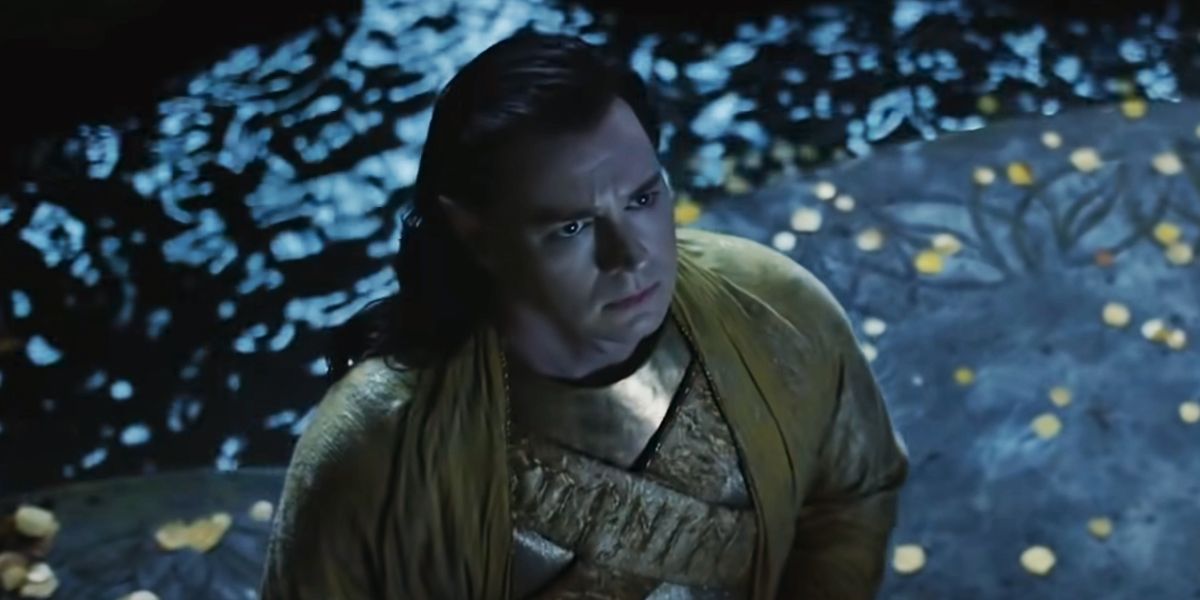Editor's note: The below contains spoilers for Episodes 1-5 of The Rings of Power and Tolkien's Middle-earth lore.While Episode 5 of The Lord of the Rings: The Rings of Power introduced a mithril backstory and subplot that played fast and loose with canonical material, it also developed a number of storylines, adding fuel to the fire of the various different theories about characters, identities, and origin stories.
The wild implications of the mithril story, the identity of Adar (Joseph Mawle) and the Stranger (Daniel Weyman), and the hint of darker machinations at work have made Episode 5 one of the most puzzling and head-scratching of the whole series; as a result, the episode has given rise to a whole new host of theories, as well as playing into some preexisting ideas. Here are some of the biggest questions and potential theories raised by Episode 5.
Who Is Adar?
In Episode 4, Adar reminisced with Arondir (Ismael Cruz Cordova) about the river Sirion in Beleriand, hinting at a past that stretches far back into the First Age. He could potentially be one of the elves who once guarded the fortress of Minas Tirith on the river Sirion in a time gone by, but the enigmas of his character point in multiple different directions if viewers try to identify him.
One theory claims that he is Maglor, the last of the sons of Fëanor whose fate is unknown at the end of The Silmarillion. On the other hand, some have claimed that he is not Maglor but his brother, Maedhros, who leapt into a fiery pit in the depths of the earth in Tolkien’s stories, clutching a burning Silmaril in his hand. This would explain the apparent burns on Adar’s face, as well as his single gloved hand, which could be covering the burns he received from holding the jewel (or alternately could be concealing the stump of Maedhros’ severed hand from another Silmarillion story).
Perhaps the strangest and most tantalizing hint is present in another of Adar’s adornments, however. He wears an armored collar with some sort of sinuous river pattern etched into it. This same design appears on Gil-galad’s (Benjamin Walker’s) ceremonial collar, almost necessitating a connection between the two elves. But what is that connection? The design, if indeed it depicts a river, could be some reference to the Mouths of the Sirion which were located at the delta of the river, which at one point was a haven from Morgoth for the elves. Gil-galad remained there for many years, and it was later attacked by Maedhros and Maglor, so a number of potential Adar-candidates collide in this same place throughout Tolkien’s history.
Another curious thing about Adar is his reaction to being called “Sauron” in the episode. While his reaction would seem to indicate that he is not, in fact, Sauron, he could merely be taking offense to the name itself. The name “Sauron” is Quenya, and means “The Abhorred.” It was a name given to him by the elves, and a name he forbade his servants from using. His violent reaction, then, could still indicate that he is Sauron, but that he is also taking offense at the name itself.
On the other hand, Adar seems to have a strong emotional connection to the orcs, which does not seem to be a terribly “Sauron” characteristic, as he seems to be actually concerned for their survival. He may well be some lieutenant of Sauron or even one who wants to set himself up as a rival to Sauron himself eventually.
For the Love of the Valar, Who Is the Stranger?
At this point, it seems like the series is just toying with the audience when it comes to the Stranger’s identity. Theories abound, identifying him as everything from Gandalf or a Blue Wizard to Sauron (or, for some reason, Tom Bombadil). While earlier encounters have pointed in a “wizardly” direction, Episode 5 just stirred the pot even more. The strange white-robed cultists are clearly searching for him, but why? Is he Sauron, and they are coming to support him? Is he a wizard who they are chasing on the orders of Sauron?
It seems every one of the major theories was given a moment that supported its own identification in the episode. When he was healing himself, the stranger spoke Quenya, which could point to him being a wizard. He was also seen staring wistfully up at the moon, which could lend credence to the idea that he is actually Tilion, or the fabled Man in the Moon from Middle-earth poems. Finally, his last shot in the episode was backed by the growing sounds of Bear McCreary’s Sauron theme in the background, which points in yet another direction.
Is the Balrog THAT Balrog?
When “The Roots of the Hithaeglir” is related by Elrond (Robert Aramayo), he tells the story of an elf, a tree, a balrog, and a Silmaril, all of which collide at the top of the misty mountains. The story itself is, as Elrond says, “apocryphal,” but while the story may be called into question, it works conveniently enough as an origin story for the balrog that later awoke and destroyed Khazad-dûm. While the rest of the story could turn out to be an embellishment, it is highly likely that the balrog of the tale is currently peacefully snoozing beneath the misty mountains.
And if That's True, Who Is the Elf?
While the balrog identification seems an obvious conclusion, it does lead to an interesting follow-up implication: if the balrog is in hibernation and will wake up later to disastrous effect, what about the elf? It would not be surprising to see both the balrog and the elf returning to the stage eventually, but if that happens, who will the elf end up being?
A couple of tantalizing possibilities present themselves here: while the story of the elf and the balrog has no source in Tolkien’s writings, it is similar to another encounter in The Silmarillion. During the fall of the elven city of Gondolin, a group of refugees fleeing the city was confronted by a balrog, and a duel followed between the balrog and the elf Glorfindel, in which both of them plunged to their deaths. The interesting twist to the story is that Glorfindel’s spirit is later reincarnated, and he returns to Middle-earth during the Second Age, even making an appearance in The Lord of the Rings. Glorfindel’s presence in the book has always been overlooked in film adaptations: his ride to save Frodo and bring him to Rivendell was rewritten and replaced with Arwen in Peter Jackson’s films, and in the Bakshi film he was replaced by Legolas. Even in the unmade John Boorman film he was replaced, this time by Sam, of all people.
The opportunity that this provides the show, though, is too compelling to overlook: Glorfindel has never been given his due in any film adaptation, and the Second Age storyline offers the show ample opportunity to write Glorfindel back into the story and give him his just deserts.
The other possibilities are less likely, but some are fascinating enough to deserve a mention: one of the notable non-entities in the story so far, for example, has been Celeborn, the elf who will eventually marry Galadriel. While a duel with a balrog over a lost Silmaril is not part of his canonical story, it would be surprising if he makes no appearance at all in the series, and he is likely to become a part of the story somehow. A final possibility is that the elf might actually be Adar. The strange fusion of good and evil and the forces of light and darkness in the “Hithaeglir” story could perhaps form some sort of twisted conflicted elf character which could eventually be revealed as the dark elf’s backstory. It is extremely unlikely, but an interesting possibility nonetheless.
But at the same time…
Is the Story Even True in the First Place?
There are a number of red flags about the story that immediately call into question how believable it is supposed to be: first of all, it is revealed in Episode 5 that Gil-galad and Celebrimbor (Charles Edwards) have been manipulating and deceiving Elrond for some time already, so it is hardly impossible for the story of the “Roots of the Hithaeglir” to be a further manipulation. Elrond himself even adds the disclaimer that it is “apocryphal,” so it is certainly meant to be taken with a grain of salt. But the biggest reason for questioning this whole situation is…
This is Almost Certainly a Plot Planted by Sauron
As much of a furor in the Tolkien fanbase as was caused by the apparent canon changes in Episode 5, there is an extremely compelling reason to think that there is far more at work than simply a rewrite of the canonical material. The seemingly ridiculous idea of elves injecting themselves with 100 ccs of mithril light by spring (I’m assuming) is extremely out of place and is certainly difficult to swallow. But a few factors in play indicate that there is far more going on than meets the eye. For one thing, it is curious that the timeline for the elves “bathing in the light” of mithril is exactly the same as that in which Celebrimbor’s forge needs to be completed: “by spring.”
The introduction of the spring deadline for the forge in Episode 2 in the first place was a strangely short timeframe for immortal elves, and even at the time a few were theorizing that Sauron’s influence might be behind it: canonically, Sauron worked in Eregion in disguise, and it was with his influence and knowledge that Celebrimbor ended up making the Rings of Power in the first place. This necessity for large quantities of mithril by spring is almost certainly related to the eventual forging of the Rings of Power, and the whole crisis is consequently likely planted by Sauron. The poisoning of the tree in Lindon could well have been accomplished by Sauron, and Tolkien does note in The Lord of the Rings that Sauron was notably always desirous of mithril. The idea of creating a crisis to push Celebrimbor into creating the Rings and earning a massive score of mithril at the same time is exactly the kind of deception that Sauron would be capable of creating.
Perhaps the most indicative piece of evidence supporting this, though, is an involuntary slip-up on the part of Celebrimbor. For context, if the “apocryphal” story is true, then the lightning-struck Silmaril tree is the origin of mithril, which has just recently been discovered by dwarves. It is a closely guarded dwarven secret that most dwarves themselves seem to be unaware of, much less any outsiders. And yet, though Elrond is seemingly the only non-dwarf to have found out about mithril, Celebrimbor says that he has already tested and worked with it and knows all about its properties. The only possibilities seem to be that either Celebrimbor is lying, or that he has come across mithril some other way or has been informed about it by some person (*cough cough* Sauron *cough cough*) who was able to show him what its properties were.
In short, if the story and the crisis seem fishy, it is probably because they are. Don’t be surprised, then, if it does turn out that Sauron is ultimately behind the entire elvish mithril crisis in addition to the creation of the Rings. While plenty of compelling theories are out there claiming that the Stranger or Halbrand (Charlie Vickers) or Adar is Sauron, it may be that Sauron hasn’t even appeared on-screen yet, but is rather quietly pulling strings behind the scene in Eregion, yet to make his presence known.
Of course, this week's episode may blow all of this entirely out of the water. But then, of course, we will no doubt have even more theories to deal with.
The Lord of the Rings: The Rings of Power premieres new episodes weekly every Friday on Prime Video.


